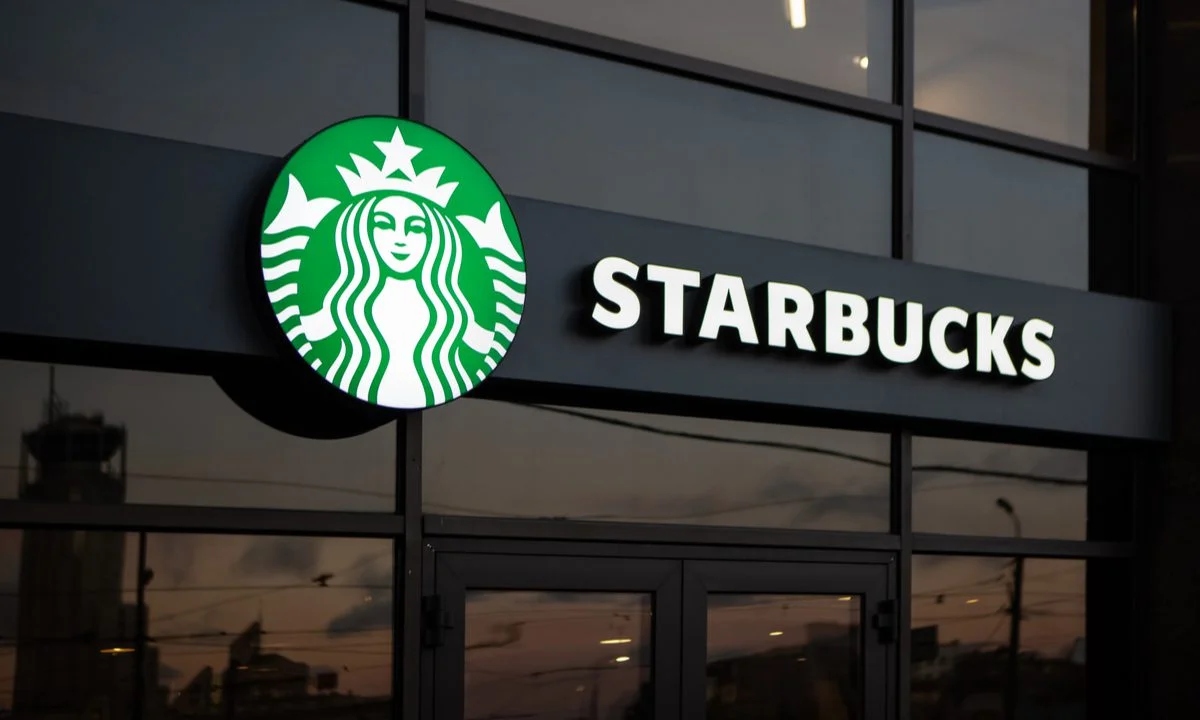Starbucks refers to its employees as “partners,” reflecting the company’s mission to create a sense of shared ownership and responsibility among its workforce. Partner hours at Starbucks refer to the scheduled work hours for these employees, both full-time and part-time.
At Starbucks, the term “partner” encompasses all employees, from baristas and shift supervisors to store managers and corporate staff. This inclusive terminology aims to foster a culture of collaboration, where every individual’s contribution is valued and recognized as essential to the company’s success.
Partner hours are carefully planned and scheduled to ensure adequate staffing levels across Starbucks locations. These hours vary depending on factors such as the store’s operational needs, peak traffic periods, and individual partner availability. Starbucks strives to create schedules that balance business requirements with partners’ personal commitments and preferences.
How Many Hours Do Starbucks Partners Typically Work?

The number of hours Starbucks partners (employees) work can vary depending on whether they are part-time or full-time, as well as their specific position within the company.
Part-Time Partners: Part-time partners at Starbucks typically work between 20-25 hours per week on average. However, some part-time partners may work fewer hours, around 12-20 hours per week, while others may work closer to 30 hours per week.
Full-Time Partners: Full-time partners at Starbucks generally work between 30-40 hours per week. The standard full-time schedule is usually around 35-38 hours per week, but some partners may work up to 40 hours or slightly more, depending on the needs of their specific store and position.
Variations by Position: The number of hours worked can also vary based on the partner’s role within Starbucks. For example, baristas and shift supervisors may have more consistent schedules, while store managers and district managers may work longer or more variable hours, including evenings and weekends, to oversee store operations and staff.
It’s important to note that Starbucks strives to provide flexible scheduling options for partners, allowing them to balance their work and personal commitments. However, during peak business hours and busy seasons, partners may be required to work longer shifts or additional hours to meet customer demand.
Starbucks Partner Hour Requirements
As a Starbucks partner (employee), the number of hours you work per week determines your eligibility for benefits and whether you are considered a part-time or full-time employee.
The minimum hours required to be employed as a Starbucks partner is typically around 20 hours per week. Partners working fewer than 20 hours are usually not eligible for benefits like health insurance and paid time off.
To be considered a full-time partner at Starbucks, you generally need to work at least 30 hours per week on average. Full-time partners are eligible for a comprehensive benefits package, including medical, dental, vision, and other insurance options, as well as paid time off and other perks.
The maximum number of hours a Starbucks partner can work is typically capped at around 40 hours per week, although this may vary depending on the store’s needs and local labor laws. Overtime pay may be available for partners who work more than 40 hours in a week.
It’s important to note that Starbucks’ hour requirements and benefit eligibility can vary slightly depending on your location and specific employment agreement. Partners should refer to their store’s policies or consult with their manager for the most up-to-date and accurate information regarding hour requirements and benefits eligibility.
Scheduling and Availability for Partners

As a Starbucks partner (employee), your schedule and availability play a crucial role in ensuring smooth operations at your store. Starbucks utilizes a scheduling system that aims to accommodate both business needs and partner preferences as much as possible.
How Schedules are Created
Schedules for Starbucks partners are typically created by the store manager or a designated scheduler. The process involves considering various factors, such as projected customer traffic, staffing requirements, partner availability, and labor budgets. Schedules are usually created two to four weeks in advance, allowing partners to plan their personal lives accordingly.
Submitting Availability
Partners are required to submit their availability to their store manager or scheduler on a regular basis, typically every two to four weeks. This availability information includes the days and times you are available to work. It’s essential to provide accurate and up-to-date availability to ensure that you are scheduled for shifts that fit your schedule.
Requesting Time Off
If you need to request time off for personal reasons, such as vacations, appointments, or emergencies, you must follow the established procedures at your store. This typically involves submitting a request to your manager or scheduler well in advance, allowing them to plan accordingly and find coverage for your shifts. Starbucks aims to accommodate reasonable time-off requests, but they may be subject to approval based on operational needs.
It’s important to note that Starbucks values open communication and collaboration between partners and their managers. If you have any concerns or special scheduling needs, it’s recommended to discuss them with your manager openly and respectfully. Starbucks strives to create a supportive work environment while ensuring efficient operations.
Overtime and Premium Pay for Partners
Starbucks recognizes the hard work and dedication of its partners (employees) and offers overtime and premium pay opportunities to compensate them fairly. Overtime pay is calculated at 1.5 times the regular hourly rate for any hours worked beyond 40 hours in a workweek. This policy applies to both full-time and part-time partners.
In addition to overtime pay, Starbucks partners are eligible for premium pay on certain holidays. Typically, partners receive premium pay (often time-and-a-half or double-time) for working on major holidays such as New Year’s Day, Memorial Day, Independence Day, Labor Day, Thanksgiving Day, and Christmas Day. The specific premium pay rates may vary based on location and applicable state or local laws.
It’s important to note that Starbucks’ overtime and premium pay policies are designed to comply with federal, state, and local labor laws. Partners are encouraged to review their specific work location’s policies and consult with their managers or HR representatives for detailed information on overtime and premium pay eligibility, rates, and procedures.
Starbucks values its partners’ contributions and strives to provide fair compensation for their hard work, especially during times when they go above and beyond their regular schedules or work on designated holidays.
Part-Time vs Full-Time Partner Hours
Starbucks distinguishes between part-time and full-time partners when it comes to hours and benefits. Part-time partners are typically scheduled for 25 hours or less per week, while full-time partners work more than 25 hours per week.
Part-Time Partner Hours and Benefits:
- Scheduled for 25 hours or less per week
- Eligible for limited benefits like basic health insurance coverage and access to the partner discount
- May have more flexible scheduling options
- Accrue paid time off at a lower rate compared to full-time partners
Full-Time Partner Hours and Benefits:
- Scheduled for more than 25 hours per week, often closer to 40 hours
- Eligible for comprehensive benefits, including health insurance, retirement savings plans, and more generous paid time off
- May have more consistent and predictable schedules
- Accrue paid time off at a higher rate compared to part-time partners
It’s important to note that the specific benefits and eligibility criteria may vary based on location and individual circumstances. Partners should consult with their store manager or the Starbucks partner resource center for the most up-to-date information on hours and benefits based on their employment status.
Work-Life Balance for Starbucks Partners

Striking a healthy work-life balance is a common challenge for many employees, and Starbucks partners are no exception. However, the company recognizes the importance of this balance and offers several initiatives to support its partners in managing their work and personal commitments effectively.
One of the key ways Starbucks promotes work-life balance is through flexible scheduling options. Partners can work with their managers to create schedules that accommodate their personal needs, such as childcare responsibilities, educational pursuits, or other commitments outside of work. This flexibility allows partners to better integrate their professional and personal lives, reducing stress and promoting overall well-being.
Additionally, Starbucks offers a variety of benefits and resources to support partners’ mental and physical health. These include access to mental health resources, such as counseling services and employee assistance programs, as well as discounts on gym memberships and other wellness initiatives. By prioritizing the overall well-being of its partners, Starbucks aims to create a supportive environment where partners can thrive both professionally and personally.
Furthermore, Starbucks encourages open communication between partners and their managers. Partners are encouraged to voice their concerns and needs regarding work-life balance, and managers are trained to listen and accommodate reasonable requests whenever possible. This open dialogue fosters a culture of understanding and support, allowing partners to feel heard and valued.
It’s worth noting that while Starbucks offers these supportive measures, achieving a satisfactory work-life balance ultimately depends on individual circumstances and personal choices. Partners may need to proactively manage their time, set boundaries, and prioritize self-care to maintain a healthy balance between their work and personal lives.
Advancement Opportunities and Partner Hours
Starbucks offers various advancement opportunities for its partners (employees), and the number of hours worked can play a crucial role in determining eligibility and readiness for promotion or transfer. As partners gain experience and demonstrate strong performance, they may be considered for roles with increased responsibilities and potentially longer work hours.
For promotions within the same store or district, such as becoming a shift supervisor or assistant store manager, partners typically need to have worked a certain number of hours to demonstrate their commitment, knowledge of operations, and ability to handle additional responsibilities. The specific hour requirements may vary based on the position and location, but generally, partners with more extensive work experience and longer tenure are preferred for these roles.
Transferring to a different Starbucks location or position can also be an advancement opportunity for partners. When transferring to a higher-level role, such as a store manager or district manager position, partners may be expected to work longer hours to accommodate the increased demands and responsibilities of the new position. Conversely, if transferring to a similar role at a different location, the hours may remain comparable to their previous position.
It’s important to note that while longer work hours can demonstrate dedication and readiness for advancement, Starbucks also values work-life balance and may consider other factors such as performance, leadership skills, and overall qualifications when evaluating partners for promotions or transfers. Partners should communicate their career goals and aspirations with their managers and actively seek out opportunities for professional development and growth within the company.
COVID-19 Impact on Starbucks Partner Hours
The COVID-19 pandemic significantly impacted the operations and policies surrounding Starbucks partner hours. As the virus spread globally, Starbucks took several measures to prioritize the health and safety of its partners (employees) and customers.
One of the major changes was a temporary reduction in operating hours for many Starbucks locations. During the peak of the pandemic, some stores operated with reduced hours or closed earlier than usual to allow for enhanced cleaning and sanitization procedures. This adjustment in hours affected the schedules and total working hours for many Starbucks partners.
Additionally, Starbucks implemented new safety protocols, such as mandating face coverings for partners and customers, increasing the frequency of cleaning and sanitization, and promoting social distancing measures within stores. These changes impacted the workflow and daily routines of partners, potentially leading to adjustments in their assigned tasks and responsibilities during shifts.
To support partners during this challenging time, Starbucks introduced several temporary policies. For example, the company offered catastrophe pay for partners who were unable to work due to COVID-19-related reasons, such as being diagnosed with the virus or having to self-isolate. This measure aimed to provide financial support and peace of mind for partners who needed to take time off work.
Furthermore, Starbucks provided additional resources and support for partners, including mental health resources and access to emergency assistance programs. The company recognized the heightened stress and anxiety that the pandemic caused for many partners and aimed to prioritize their well-being during this unprecedented time.
As the pandemic situation evolved, Starbucks continued to adapt its policies and procedures to align with local health guidelines and regulations. Partners’ hours and schedules were adjusted accordingly to ensure the safety of both partners and customers while maintaining business operations as much as possible.
Starbucks Partner Hour Policies Compared to Industry
Starbucks has long been considered a leader in providing good benefits and working conditions for its partners (employees). When it comes to scheduling and hour policies, Starbucks generally offers more predictable and flexible schedules compared to many other major retailers.
Unlike some competitors that use “on-call” scheduling where employees have to be available for last-minute shifts, Starbucks provides partners with their schedules at least a week in advance. This allows for better work-life balance and planning. Additionally, Starbucks aims to schedule partners for shifts that are reasonably grouped together, rather than highly split shifts common in some retail environments.
Starbucks also offers part-time partners the ability to qualify for benefits like health insurance and stock options by working a minimum of 20 hours per week on average. Many retailers require full-time status of 30-40 hours for benefits eligibility. This makes Starbucks an attractive option for those seeking part-time work with access to meaningful benefits.
That said, Starbucks’ staffing models can sometimes lead to overly lean labor budgets during peak periods. This can result in partners being overworked at times to meet customer demand. However, Starbucks does pay overtime rates and tries to distribute overtime opportunities fairly among interested partners.
Overall, while not perfect, Starbucks is viewed as providing better work scheduling and hour policies compared to many chains in the retail and restaurant industries. The company’s reputation helps attract and retain partners who value work-life balance and predictable schedules.
Tips for Optimizing Your Starbucks Partner Hours
As a Starbucks partner, managing your hours effectively is crucial for maintaining a healthy work-life balance and maximizing your earnings. Here are some tips to help you optimize your partner hours:
1. Communicate Your Availability Clearly
Be upfront with your manager about your availability, including any scheduling constraints or preferences you may have. This will help them create a schedule that works for both you and the store.
2. Stay Flexible
While it’s important to communicate your availability, it’s also beneficial to remain flexible when possible. Being open to picking up additional shifts or swapping shifts with colleagues can help you earn more hours and build goodwill with your manager and coworkers.
3. Utilize the Partner Hours Tracking System
Starbucks provides an online system for partners to track their hours and view their schedules. Make sure to regularly check this system to ensure your hours are accurately recorded and to plan your schedule accordingly.
4. Prioritize Shifts During Peak Hours
If you’re looking to maximize your earnings, consider prioritizing shifts during peak hours, such as mornings and weekends, when customer traffic is higher. These shifts often offer more opportunities for tips and may also qualify for premium pay.
5. Volunteer for Overtime or Extra Shifts
When the opportunity arises, consider volunteering for overtime or picking up extra shifts. This can help you earn additional income and demonstrate your commitment to the company, potentially opening doors for future advancement opportunities.
6. Leverage Your Seniority
As you gain more experience and seniority as a Starbucks partner, you may have the opportunity to request preferred shifts or schedules. Don’t be afraid to leverage your seniority to secure a schedule that better aligns with your personal needs and preferences.
7. Foster Positive Relationships with Colleagues
Building strong relationships with your colleagues can make it easier to swap shifts or cover for one another when needed. Offer to help out when others need coverage, and they may be more likely to return the favor in the future.
Remember, effective communication, flexibility, and a willingness to go the extra mile can help you optimize your Starbucks partner hours and create a more rewarding and fulfilling work experience.




